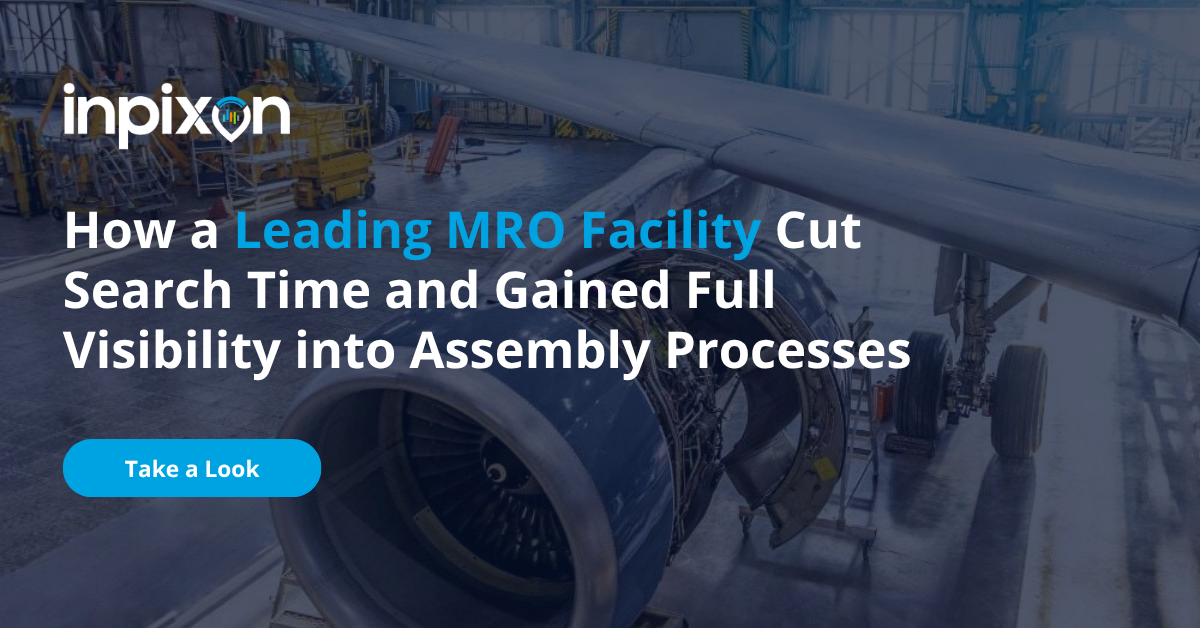An interview with Jason Witkowsky and Dr. Norman Dziengel, Inpixon
The aerospace industry is under mounting pressure. With the peak of MRO (Maintenance, Repair and Overhaul) demand expected in 2026, the pressure to deliver on time is growing. Component availability is tightening, and turnaround times (TATs) in engine maintenance have become critical performance standards. At the center of this operational race stands the turbine MRO process - a discipline where even a 48-hour delay can trigger costs in the millions.
This is particularly true for high-demand engines like the CFM56. When these turbines are late, cascading effects ripple through fleets, leasing schedules, airline planning, and customer relationships.
But the root causes of these delays are often buried in process complexity and lack of transparency. Many MROs still rely on fragmented systems, outdated workflows, and even paper-based documentation. Detecting bottlenecks early - or resolving them fast - becomes nearly impossible.
That’s where Inpixon comes in. As a provider of real-time location systems (RTLS), AI-powered analytics, and IIoT-enabled process intelligence, Inpixon helps aerospace organizations gain visibility - not after delays occur, but before.
In this interview, Jason Witkowsky (Account Director) and Dr. Norman Dziengel (Senior Product Manager & Consultant) share why the current MRO landscape needs rethinking - and how technologies like RTLS and AI can make the difference.

"Delays in engine MRO aren't just expensive—they're systemic. They ripple through leases, schedules, and reputations."
— Jason Witkowsky, Account Director, Inpixon
Let’s start with the basics: Why do delays in engine MRO have such an outsized impact?
Jason Witkowsky: Because delays trigger a chain reaction. If a turbine can’t be delivered on time, you might need to lease a replacement engine - fast. There are penalties, customer escalations, and tight production schedules behind it. It’s not uncommon for a single delay to cost seven figures. And high TATs directly reduce throughput - fewer engines delivered per quarter.
Norman Dziengel: And don’t underestimate the reputational impact. MROs typically have a small number of very high-value customers and components. If you lose reliability on CFM overhauls, for example, clients may look elsewhere. Some estimate that a drop in delivery performance can reduce annual revenue by 3 to 5 percent. That hurts EBITDA - and recovery is slow.
What makes aircraft engine MRO more complex than other industrial maintenance processes?
Dr. Norman Dziengel: Engine MRO is incredibly interdependent. A turbine overhaul involves hundreds of steps and long lead times. If one approval or spare part is delayed, the whole process stalls. In many MROs, workflows still depend on email, Excel, or even paper folders. Some use color-coded printouts to track priorities. It works - until it doesn’t. Teams spend more time chasing data than doing repairs.
Is this complexity getting worse?
Dr. Norman Dziengel: Yes - and here’s why: Life-Limited Parts (LLPs) require complete documentation, and aircraft are being operated longer. That means more back-to-birth documentation. New aircraft bring new systems, older aircraft bring more paperwork. MRO teams must handle both.
Jason Witkowsky: And the industry as a whole is feeling the pressure. Engine overhauls involve dozens of stakeholders. Transparency and coordination are essential. This is true not just in aerospace, but also in sectors like rail and shipbuilding.
Where do delays typically begin in the process?
Dr. Norman Dziengel: They often start small: a misplaced part, a missing QA release, or a lack of process visibility. But delays quickly become serious when they affect priority planning. Turbine parts move through disassembly, inspection, repair, reassembly - and each step requires visibility.
Imagine you need a replacement part with 50% of flight cycles left. Only one is available - and it has 80%. But that one’s already allocated to another customer. That’s how uncoordinated priorities cause cascading delays. Knowing what’s needed when, where, and by whom is key.
What kind of components are especially critical to track in this context?
Dr. Norman Dziengel: Anything that’s time-sensitive or governed by flight cycle limits. Examples:
- Landing gear
- Engine turbine disks and fan blades
- Pressurized cabin structures
- Wing attachment points
- Control surfaces like rudders and ailerons
All of them come with strict documentation and cycle limits - and often need to be managed across multiple MRO workflows.
How does real-time location tracking help in this environment?
Jason Witkowsky: It’s a game changer. If you know where every asset is, and what condition it’s in, you can respond immediately. We’ve seen cases where search times for parts dropped from 30 minutes to less than one. That directly improves turnaround time.
Dr. Norman Dziengel: And it’s not just about finding things. You also see process status - ready, waiting, blocked - and that’s where you regain flow.
What exactly do customers track with RTLS?
Dr. Norman Dziengel: Everything from milk runs and turbine stands to high-priority parts, tools, and WIP zones. If it moves and matters, we track it.
And what role does AI play in all of this?
.png?width=200&height=200&name=big-Norman%20Dziengel%20(1).png)
"With the right data, AI helps you fix problems ten days before they break your schedule—not ten hours after."
— Dr. Norman Dziengel, Senior Product Manager & Consultant, Inpixon
Jason Witkowsky: AI helps turn visibility into foresight. It learns from delay patterns, predicts bottlenecks, and helps teams act before problems escalate.
Dr. Norman Dziengel: We focus on explainable AI - it doesn’t just give alerts. It shows why a problem is emerging, and where to intervene.
Are MROs already using these tools at scale?
Dr. Norman Dziengel: The big names are moving fast. Smaller MROs are still hesitant, but that’s changing. One of the tipping points is when teams see a simple traffic light showing part priorities. That’s when we hear, “Now I get it.” We call these the Aha-Moments.

.png?width=533&height=351&name=INPIXON%20-%20Blog%20-%20MRO%20-%20Benefit%20(1).png)
.png?width=533&height=351&name=INPIXON%20-%20Blog%20-%20MRO%20-%20Benefit%20(2).png)
.png?width=533&height=350&name=INPIXON%20-%20Blog%20-%20MRO%20-%20Benefit%20(3).png)
.png?width=533&height=350&name=INPIXON%20-%20Blog%20-%20MRO%20-%20Benefit%20(4).png)
.png?width=533&height=350&name=INPIXON%20-%20Blog%20-%20MRO%20-%20Benefit%20(5).png)
What’s holding others back?
Jason Witkowsky: Fear of disruption. But today’s RTLS and analytics tools integrate cleanly with ERP, MES, and quality systems. No need for full replacement.
How do you recommend getting started?
Jason Witkowsky: Start with a TAT analysis: Look at the last 20 delayed engines. Where did things break down? Where was information missing? From there, you can roll out tracking and alerting in the right places - and scale up.
What kind of results have you seen?
Dr. Norman Dziengel: Search times down 90%. Delay rates cut by up to 10%. In some cases, we’ve seen customers win new contracts because of their improved delivery reliability.
And how does this support compliance?
Jason Witkowsky: RTLS creates a digital trace. Every handover, every location change is logged. Audits get easier, documentation becomes automatic.
Do technicians actually want this?
Dr. Norman Dziengel: They do - once they see the benefit. Less time searching, fewer surprises. This isn’t about control. It’s about supporting skilled work.
Final thoughts: Why is this shift so urgent - and why now?
Jason Witkowsky: Because delays are too expensive. And trust is hard to win back. We now have modular, proven technologies that solve real pain points. This isn’t about replacing people - it’s about giving them the tools to deliver.
Want to reduce MRO delays and gain real-time visibility into your turbine workflows? Learn how Inpixon RTLS and AI analytics can help you deliver on time - every time.
🡪 Explore our latest MRO Success Story


-3.png?length=1000&name=Inpixon%20LinkedIn%20Banner%20August%202025%20(2)-3.png)


